| Sporty/performance car; Built in Japan |
|
|
| Good condition price range: $1,200 – $4,200* |
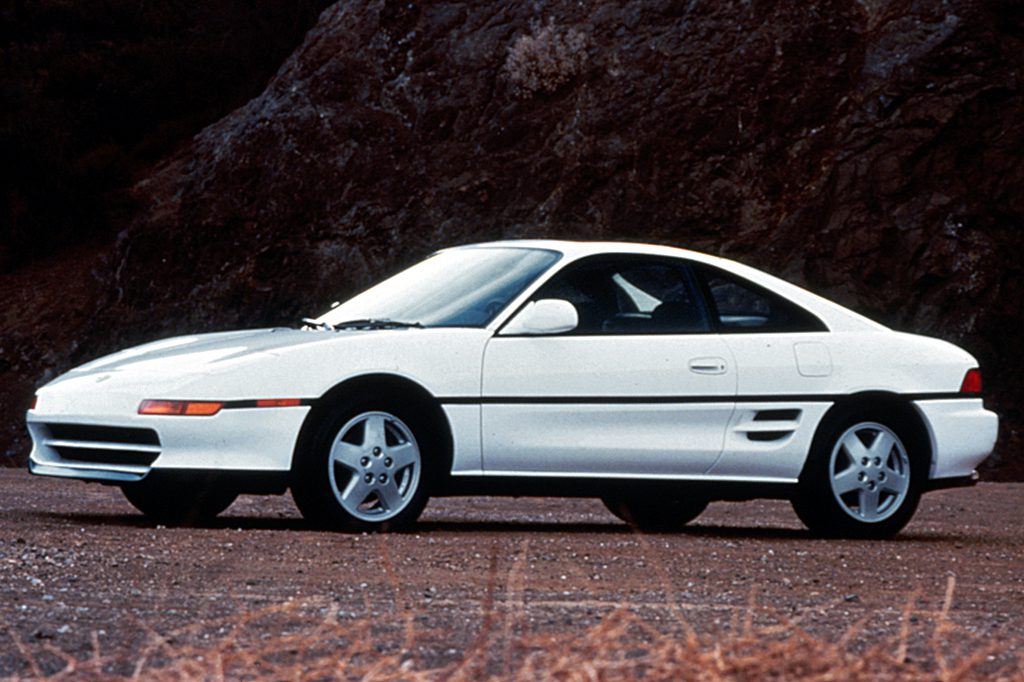
1993 Toyota MR-2
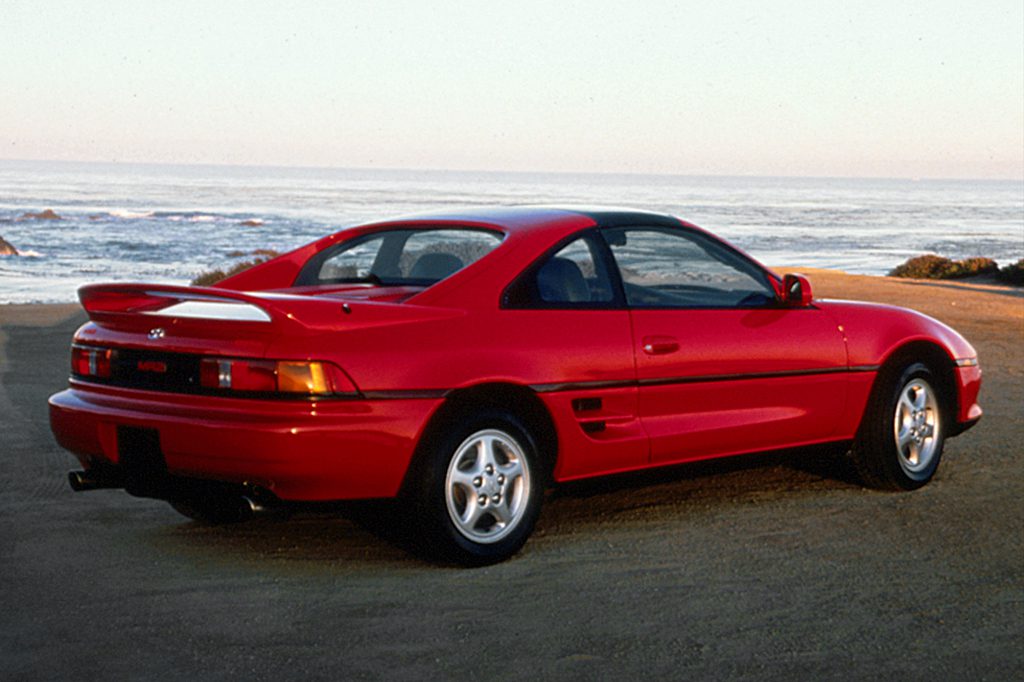
1991 Toyota MR-2

1994 Toyota MR-2
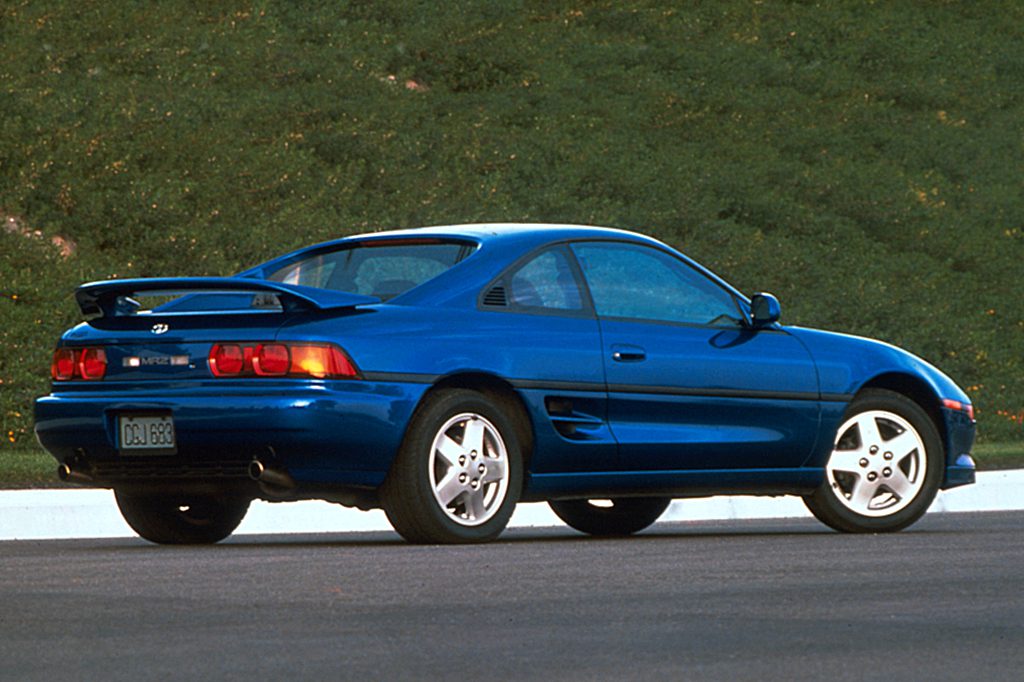
1995 Toyota MR-2
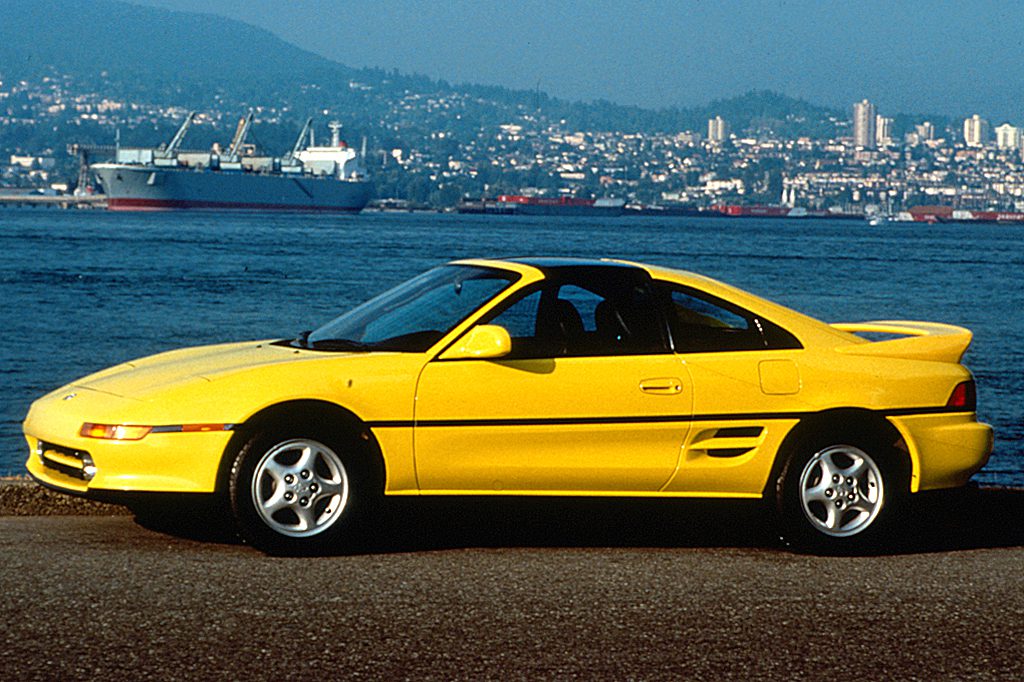
1992 Toyota MR-2
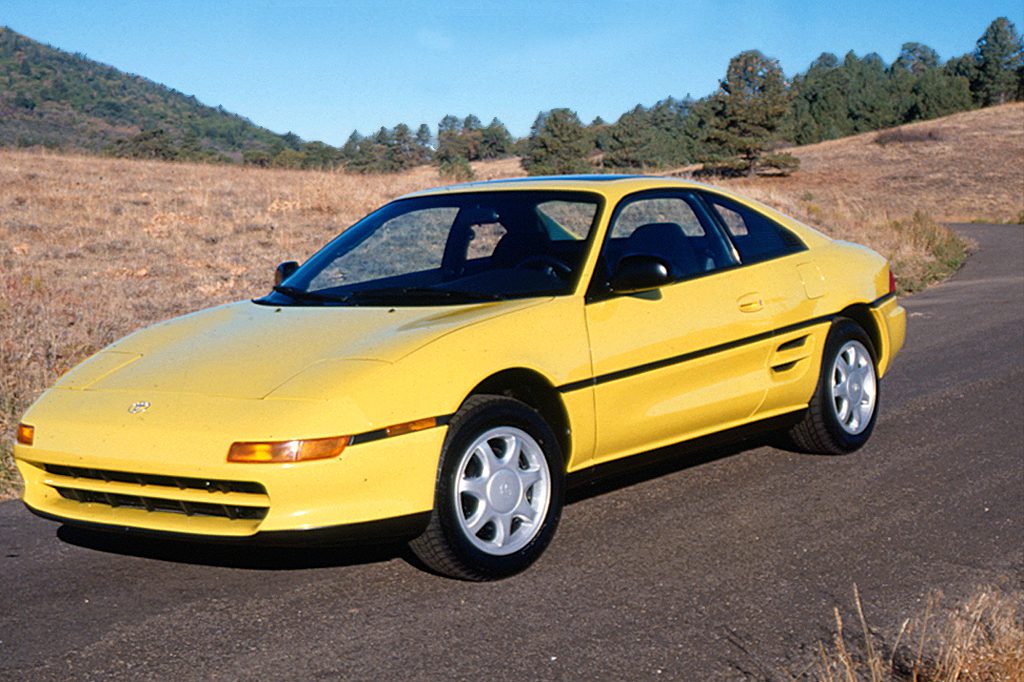
1991 Toyota MR-2
| Pros: |
|
| Cons: |
|
Billed as an “affordable exotic,” the MR2 was a slow seller. Soaring prices helped kill it, and they remain relatively high today. Because no one else offered a 2-seat midengined sports car in its price class, however, if that’s what you want, Toyota is the only game in town. Fortunately, Toyota’s reputation for solid workmanship makes the MR2 a better value.
Overview
After a half-decade on the market in its prior form, Toyota’s mid-engined, rear-drive sports car earned a redesign for 1991. Dubbed “Mister Two,” the 2-seater skipped the 1990 model year completely. The reworked version arrived in spring of that year, as an early ’91 model.
Bigger and racier in appearance than its predecessor, the 1991 MR2 displayed Ferrari-like styling and offered more power than before. Base models got a 130-horsepower, 2.2-liter 4-cylinder engine, borrowed from Toyota’s Celica GT/GT-S. A turbocharged, 200-horsepower 2.1-liter engine, also used in the Celica All-Trac Turbo, went into the Turbo MR2. Both engines were dual-overhead-cam designs with four valves per cylinder, mounted transversely behind the 2-passenger cockpit. A supercharged engine, available in 1989, was not used in the new generation.
A 5-speed manual transmission was standard, with 4-speed automatic optional for nonturbo models. Unequal-size tires and wheels were installed: 195/60 on 6-inch wheels up front, versus 205/60 on 7-inch wheels at the rear. T-bar roof panels were available on the Turbo and the base MR2, but an optional pop-up/removable moonroof could be installed instead.
Riding a wheelbase that had been increased by 3.2 inches, measuring 9.3 inches longer overall, the new MR2 weighed 350 to 400 pounds more than its predecessor. A driver’s airbag was standard, and antilock braking was a new option. So was electro-hydraulic power steering.
Yearly Updates
| 1992 MR2 Following a full redesign for 1991, the new MR2 was virtually unchanged in its second season. |
| 1993 MR2 An updated MR2 debuted in March 1992, as an early ’93 model. Suspension revisions were intended to reduce rear-end breakaway in hard cornering. Changes included reduced ride height, higher-rate springs and shock absorbers, stiffer bushings, and longer rear toe-control arms. Tires grew wider and bigger in diameter (now 15-inch). Alloy wheels got a fresh design, and the base engine grew from 130 to 135 horsepower. Both models gained a larger front air intake. All Turbo coupes now had the previously optional T-bar roof. Turbo coupes gained an 8-speaker audio system as well as standard air conditioning, cruise control, power windows, and power door locks. |
| 1994 MR2 A passenger-side airbag joined the driver’s airbag for 1994. Both MR2 models got revised taillamps and minor tweaks to the suspension components and shock absorbers. The base model added standard air conditioning and a newly designed one-piece rear spoiler. Previously, spoilers were reserved for Turbos. Air conditioning switched to non-CFC refrigerant. |
| 1995 MR2 Toyota’s midengine coupe entered its final season without change, except that the base model with T-bar roof gained a Power Package (power windows and door locks) as standard equipment. Steadily escalating prices and high insurance premiums had contributed to serious declining MR2 sales. Several years later, as the new century began, Toyota would revive the MR2 name for its new midengine Spyder convertible. |
